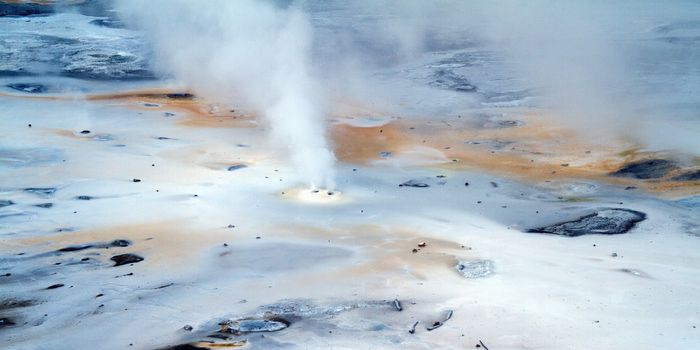This Martian Ice Deposit May Have as Much Water as Lake Superior
Looking for water in our solar system is a good way to begin our search for extraterrestrial life, but it's not exactly easy to find on other planets.
Although none of Earth's neighboring planets have nearly as much water as the Earth does, Mars is a pretty good candidate for being the most Earth-like of any planet in the solar system and we know from previous data that Mars probably had vast amounts of flowing water on its surface at one time or another.
Now, scientists believe they've found a significantly-sized ice deposit below the Martian surface that holds as much water as Lake Superior, the largest of the Earth’s Great Lakes.
Image Credit: NASA/JPL-Caltech/Univ. of Arizona
Published in the Geophysical Research Letters, scientists analyzed special radar data from the Mars Reconnaissance Orbiter (MRO) and found that one of the giant New Mexico-sized plains on the planet may contain ice water as far as 33 feet below the surface.
The giant deposit of ice could be anywhere from 260-560 feet thick, which would be a significant amount of water if true.
The researchers note that it’s probably a good thing it’s underground, because if the water were on the planet’s surface instead, it would evaporate into vapor and find its way into the atmosphere, which would make the region and its possible water ice remnants more difficult to study.
"This deposit probably formed as snowfall accumulating into an ice sheet mixed with dust during a period in Mars history when the planet's axis was more tilted than it is today," said Cassie Stuurman of the Institute for Geophysics at the University of Texas, Austin and lead researcher of the study.
Because of Mars' somewhat chaotic axial tilt conditions, water doesn't accumulate at the poles. Instead, it drives itself to the equatorial regions of the planet. There, it must either find a way to burrow into the ground to remain a solid or liquid form, or it evaporates into the atmopshere and becomes lost over time. Much of Mars' previous evaporated water has already been lost to outer space, as it escaped the atmosphere.
Although this giant plain may only contain less than 1% of the planet’s total water supply, there is still a lot of excitement regarding learning more about its formation and existence. Fortunately, it may not be so hard to reach for future exploration missions:
"This deposit is probably more accessible than most water ice on Mars, because it is at a relatively low latitude and it lies in a flat, smooth area where landing a spacecraft would be easier than at some of the other areas with buried ice," said Jack Holt, a co-author of the paper.
Scientists especially want to know if this water could be the driving force behind any types of microbial life forms. With the upcoming Mars 2020 rover mission still ahead, this zone, as well as a recently-discovered hot spring-like zone might be good places to make the first searches.
Source: NASA









